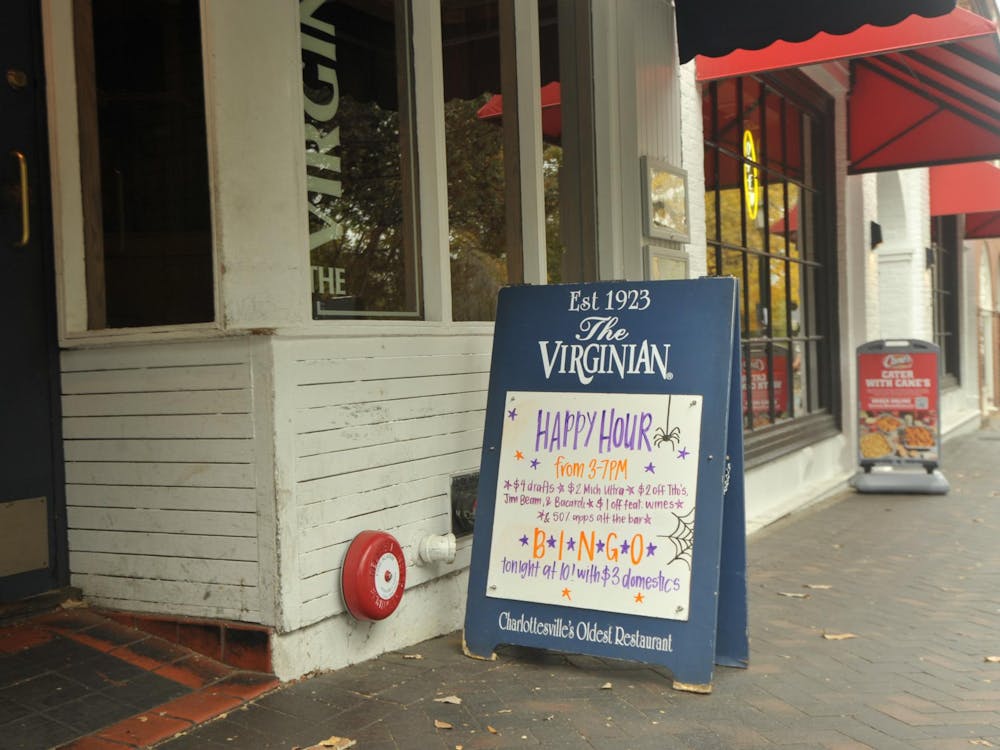Despite recent concerns regarding the inequity of the selection criteria, the College Board decided to continue its relationship with the National Merit Scholarship Corporation in a March meeting of the Executive Board.
Many higher education officials, especially those in the University of California system, said they are concerned about the selection criteria, the validity of the use of the College Board's PSAT to determine awardees and the adverse impact sponsoring the program has on disadvantaged students at participating institutions.
The National Merit Scholarship Corporation was made aware of numerous concerns regarding its scholarship program but had "nothing of this nature" brought to them before, NMSC Director of Public Information Elaine Detweiler said. "We're aware that there are often concerns about the fairness of standardized tests."
The College Board's PSAT, which is administered to most high school students in the fall of their junior year, is used to select a pool of semi-finalists for the competitive National Merit Scholarship program. Students then are required to submit an essay and provide additional information about school and community activities. Schools participating in the program then sponsor scholars.
University admissions officials said the University has a policy of not rewarding National Merit finalists scholarship money but rather views the recognition as it would any other award or honor, Admissions Counselor Brent Evans said.
"Obviously, winning the National Merit Scholarship is a significant honor, so we do take that into consideration," Evans said. "But I wouldn't say it is a deciding factor."
The PSAT is given in over 20,000 high schools each year, Detweiler said of the use of the PSAT by the NMSC.
"It is available to the vast majority of students, which ensures that all entrants are exposed to the same test and under the same conditions," she said. It is "a test that shows that they are all competing on the same playing field."
Concerns of fairness
According to Michael Hayashi, former associate chancellor at the University of California-Berkeley, one of the main concerns about the scholarship program is the cutoff score used by the program.
Semi-finalists are selected based on each state's percentage of the national total of high school students taking the test, Detweiler said. If a state has 2 percent of the national total of high school students, it will have 2 percent of its test takers included in the semi-finals, she added. Thus, the scholarship competition cutoff score can vary wildly between states.
"Students scores are put in descending order," Detweiler said. "When we reach the capacity for that state, that becomes the state's national qualifying basis. This enables us to name outstanding students from across the country."
The cutoff score is set, and anything below the score is not considered. This cutoff score is arbitrary, Hayashi said.
"All testing associations say you should never use a cutoff score," he said. "It means that your fate can be determined by your answer to a single question. It is establishing a pool on the basis of data that is miniscule."
The NMSC does not keep information on the background of recipients but works with the Educational Testing Service, the organization which creates the PSAT and SAT, to ensure that no group is advantaged or disadvantaged.
"We think the results are reporting the inequities in the educational system," Detweiler said. "They're not the cause of the inequities."
Hayashi and others said they are concerned that neither the PSAT nor the cutoff score has been validated for the purpose of scholarship selection.
"If you're going to use a test to make an important decision, then that test has to be validated for that purpose," he said. "This test has not been validated for the National Merit Scholarship program. That's just wrong. How do they know if they are choosing the right students?"
National merit program flunks UC test
Michael Brown, chair of the University of California Board of Admissions and Relations with Schools, said he agrees with Hayashi, explaining that the test is not sufficient to determine student merit, which is one the U.C. system's main concerns.
Hayashi said he realized during his time as vice chancellor at Berkeley, that although the school moved up to number one from a rank of 44, the school still was admitting mostly affluent students who were not "special"-- not students who stood out or would have been chosen by the school otherwise.
Hayashi said he also found that there was little overlap between the students who received Berkeley's own merit scholarships, which he deemed worthy of receiving the money, and the awardees from the National Merit Scholarship program.
"The [NMSC] money that goes to them could have been used to support poor students," he said.
Others in the U.C. system said they agree that the scholarships are going to economically advantaged students, further disadvantaging other students.
"The procedures that the National Merit Scholarship program does use appears to have an unwarranted negative impact on [poorer] students," Brown said. There is "a lot of money going to a very elite group -- small and elite."
Hayashi said he thinks students who may do well in high school but not as well on standardized tests are at a disadvantage. He said he has seen no difference in academic performance between students who receive merit scholarships and those that do not.
"Grades are the best predictor of how someone will do in college," Hayashi said. "In establishing the first pool, they don't look at high school grades at all. A good tester with bad grades will do better than someone with good grades that is bad at testing."
The U.C. Board of Admissions and Relations with Schools has been reviewing Hayashi's concerns and contacting the College Board and the National Merit Scholarship Corporation since last fall.
Colleges end merit scholarships
Brown said despite the fact that these issues have been raised in the past, neither the College Board nor the NMSC has any information regarding the validity of the use of the PSAT or on adverse impact available to offer them. "That seemed odd to us that they wouldn't even be concerned about adverse impact," he said.
The job of the U.C. Board of Admissions and Relations with Schools is to "identify students who could succeed at the school, identify them properly and in a way that we can achieve a representative student body," Brown said. "We want to appropriately offer merit and do so in a way that has the least negative impact possible."
The Board decided to conduct its own study last fall. After searching the Web sites of the College Board, the ETS and the Psychological and Educational Studies database, they found nothing that addressed the use of the PSAT by the NMSC.
"That was alarming to us, Brown said. "B.O.A.R.S. came to the conclusion that there is no valid data that supports that use."
The Board decided that U.C. institutions should no longer offer scholarships or give admissions preference to students identified by the NMSC, Brown said. The Board further asked U.C. institutions to review how the National Merit Scholarship standing is used both in admissions and scholarship decisions.
"U.C. is not critical of merit -- we are critical of that definition of it," Brown said. "It is even more important that we do so given that there is adverse impact."
Several U.C. schools already have decided to no longer give preference based on what Brown calls the National Merit Scholarship program's "narrow definition of merit." Those schools include several of the top schools in the country-- University of California-Davis, University of California- Los Angeles and University of California-Santa Barbara.
Prior to the College Board Executive Board meeting, Hayashi said he believed the College Board would continue its relationship with the NMSC because it "gives them a huge market advantage over the ACT."
In addition, Hayashi said although the College Board believes it should not control the NMSC because it is an independent program, it does have a responsibility to students.
"We market their product to millions of students each year," he said. "We're telling students that you should trust this program. They have a responsibility."






